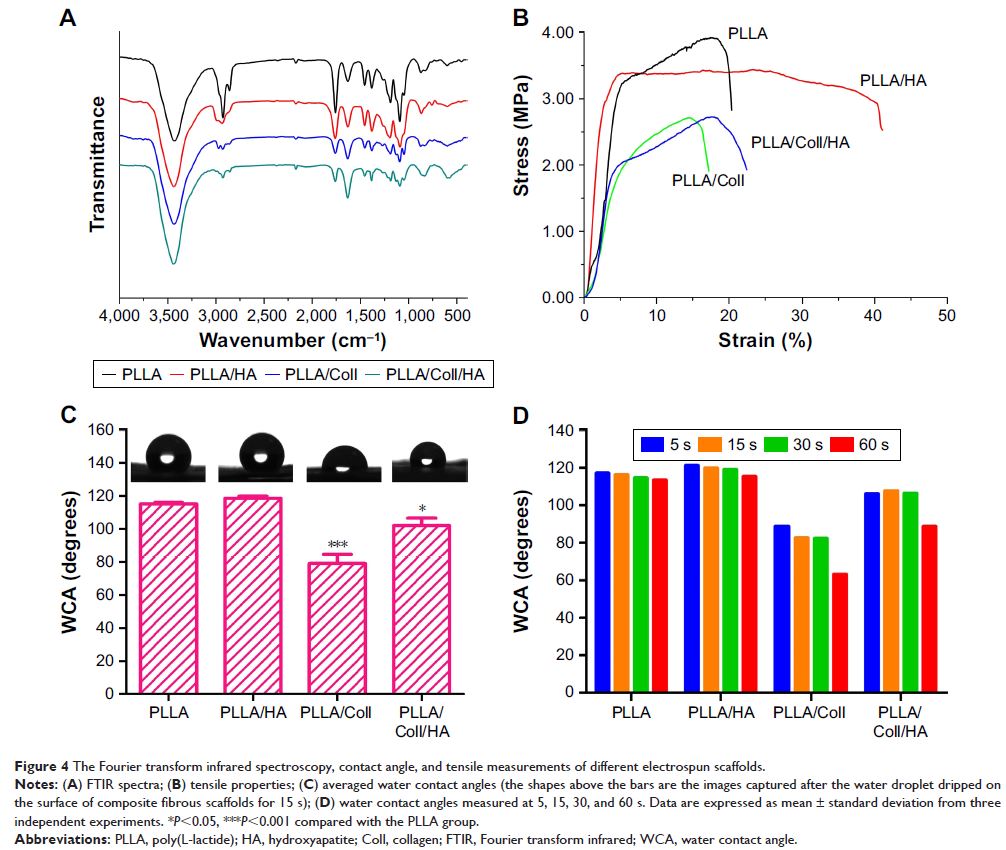9 7 8 1 6
论文已发表
注册即可获取德孚的最新动态
IF 收录期刊
- 3.3 Breast Cancer (Dove Med Press)
- 3.4 Clin Epidemiol
- 2.5 Cancer Manag Res
- 2.9 Infect Drug Resist
- 3.5 Clin Interv Aging
- 4.7 Drug Des Dev Ther
- 2.7 Int J Chronic Obstr
- 6.6 Int J Nanomed
- 2.5 Int J Women's Health
- 2.5 Neuropsych Dis Treat
- 2.7 OncoTargets Ther
- 2.0 Patient Prefer Adher
- 2.3 Ther Clin Risk Manag
- 2.5 J Pain Res
- 2.8 Diabet Metab Synd Ob
- 2.8 Psychol Res Behav Ma
- 3.0 Nat Sci Sleep
- 1.8 Pharmgenomics Pers Med
- 2.7 Risk Manag Healthc Policy
- 4.2 J Inflamm Res
- 2.1 Int J Gen Med
- 4.2 J Hepatocell Carcinoma
- 3.7 J Asthma Allergy
- 1.9 Clin Cosmet Investig Dermatol
- 2.7 J Multidiscip Healthc

创新的生物可降解聚(L-丙交酯)/胶原/羟基磷灰石复合纤维支架促进成骨细胞增殖和分化
Authors Zhou GQ, Liu SD, Ma YY, Xu WS, Meng W, Lin X, Wang WY, Wang SX, Zhang JC
Received 18 July 2017
Accepted for publication 17 September 2017
Published 13 October 2017 Volume 2017:12 Pages 7577—7588
DOI https://doi.org/10.2147/IJN.S146679
Checked for plagiarism Yes
Review by Single-blind
Peer reviewers approved by Dr Govarthanan Muthusamy
Peer reviewer comments 3
Editor who approved publication: Dr Linlin Sun
Abstract: The development of an artificial bone graft which can promote the
regeneration of fractures or diseased bones is currently the most challenging
aspect in bone tissue engineering. To achieve the purpose of promoting bone
proliferation and differentiation, the artificial graft needs have a similar
structure and composition of extracellular matrix. One-step electrospinning
method of biocomposite nanofibers containing hydroxyapatite (HA) nanoparticles
and collagen (Coll) were developed for potential application in bone tissue
engineering. Nanocomposite scaffolds of poly(L-lactide) (PLLA), PLLA/HA,
PLLA/Coll, and PLLA/Coll/HA were fabricated by electrospinning. The morphology,
diameter, elements, hydrophilicity, and biodegradability of the composite
scaffolds have been investigated. The biocompatibility of different
nanocomposite scaffolds was assessed using mouse osteoblasts MC3T3-E1 in vitro,
and the proliferation, differentiation, and mineralization of cells on
different nanofibrous scaffolds were investigated. The results showed that
PLLA/Coll/HA nanofiber scaffolds enhanced cell adhesion, spreading,
proliferation, differentiation, mineralization, and gene expression of
osteogenic markers compared to other scaffolds. In addition, the nanofibrous
scaffolds maintained a stable composition at the beginning of the degradation
period and morphology wastage and weight loss were observed when incubated for
up to 80 days in physiological simulated conditions. The PLLA/Coll/HA composite
nanofibrous scaffolds could be a potential material for guided bone
regeneration.
Keywords: nanofibrous
scaffolds, hydroxyapatite, electrospinning, tissue engineering, degradation,
differentiation
